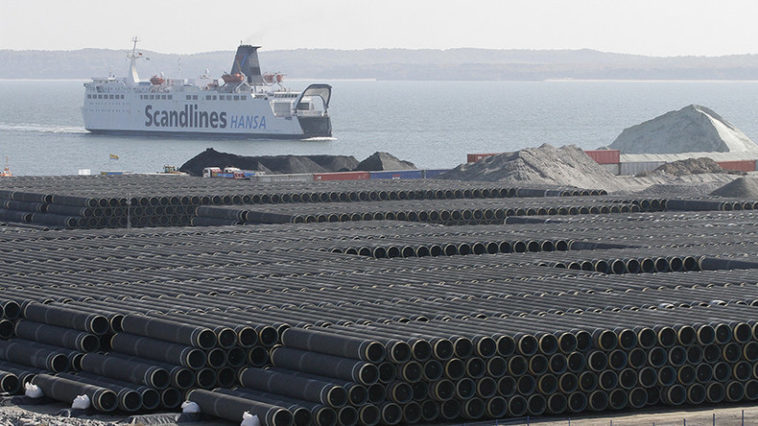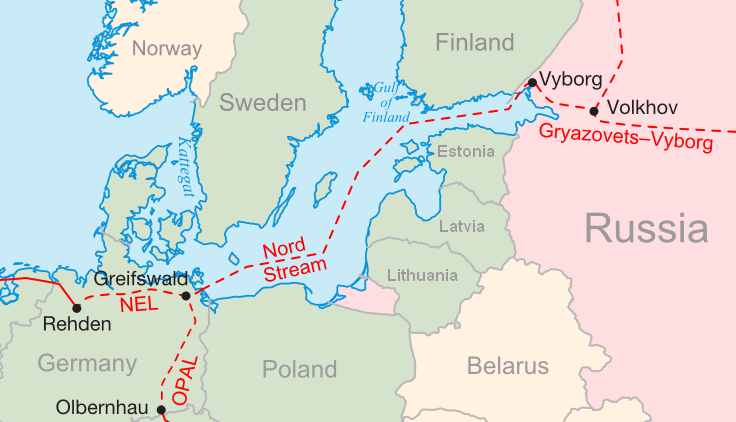
Component sections of the Nord Stream 2 gas pipeline, waiting to be laid in the Baltic Sea.
In the latest of a slowly advancing series of events,
Germany has decided to disregard and work around the American economic sanctions directed at the Russian Federation, and to find a way to bring in the new Nord Stream 2 pipeline from Russia to Germany.
Finland, Sweden and Denmark have yet to approve the new pipeline project, but with Germany as a major economic power on board it is increasingly likely that they will follow suit.
The Nord Stream 2 pipeline is expected to double the present pipeline's volume of natural gas to Europe, from 55 billion cubic meters to about 110 billion cubic meters. The pipeline terminates in Greifswald, Germany, where it connects to various trans-European pipelines for distribution across that continent.
The project is being designed according to the most modern quality standards, and part of those standards focus on minimal to zero adverse environmental impact, with expected emissions to be 61 percent lower than the existing Central Corridor's pipeline. The pipeline has a 3,100 km run across Russia, and a 1,200 km run under the Baltic Sea and towards Germany.
With this pipeline in place,
Russia further secures both its place as an energy exporter with Europe, but it also solidifies business and commercial relations with Europe as a whole. As the economic sanctions against the Russian Federation slowly resolve, the nation stands to be seen as much more vital to the region than it ever has been.
Comment: US Secretary of State Rex Tillerson
says this pipeline will be a 'threat' to Europe's energy security:
Poland, Ukraine and Baltic states fear the pipeline would increase Europe's dependence on Russian gas and provide the Kremlin with billions of dollars of additional revenue to finance a further military build-up on European Union's borders.
"Like Poland, the United States opposes the Nord Stream 2 pipeline. We see it as undermining Europe's overall energy security and stability," Tillerson said at a joint news conference with the Polish foreign minister in Warsaw.
"Our opposition is driven by our mutual strategic interests," he said.
However, the biggest threat has been from the US, and German businessmen know it. German politicians are increasingly
pressuring Merkel to abandon US-imposed sanctions altogether:
Sanctions are "a dead horse one should not ride anymore," Ramelow told Der Spiegel as he pointed out that they did not actually contribute anything to the resolution of the Ukrainian crisis. Ukraine's problems cannot be "solved through a symbolic policy at the expense of our industries," he said. [...]
In December 2017, a study published by the Kiel Institute for the World Economy showed that Germany is de facto Europe's biggest loser from the EU penalties introduced against Russia. German exports to Russia dropped nearly 40 percent with the country losing €618 million ($768 million) each month because of the sanctions.


Comment: US Secretary of State Rex Tillerson says this pipeline will be a 'threat' to Europe's energy security: However, the biggest threat has been from the US, and German businessmen know it. German politicians are increasingly pressuring Merkel to abandon US-imposed sanctions altogether: